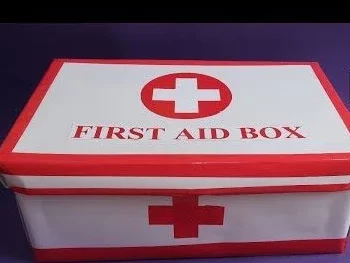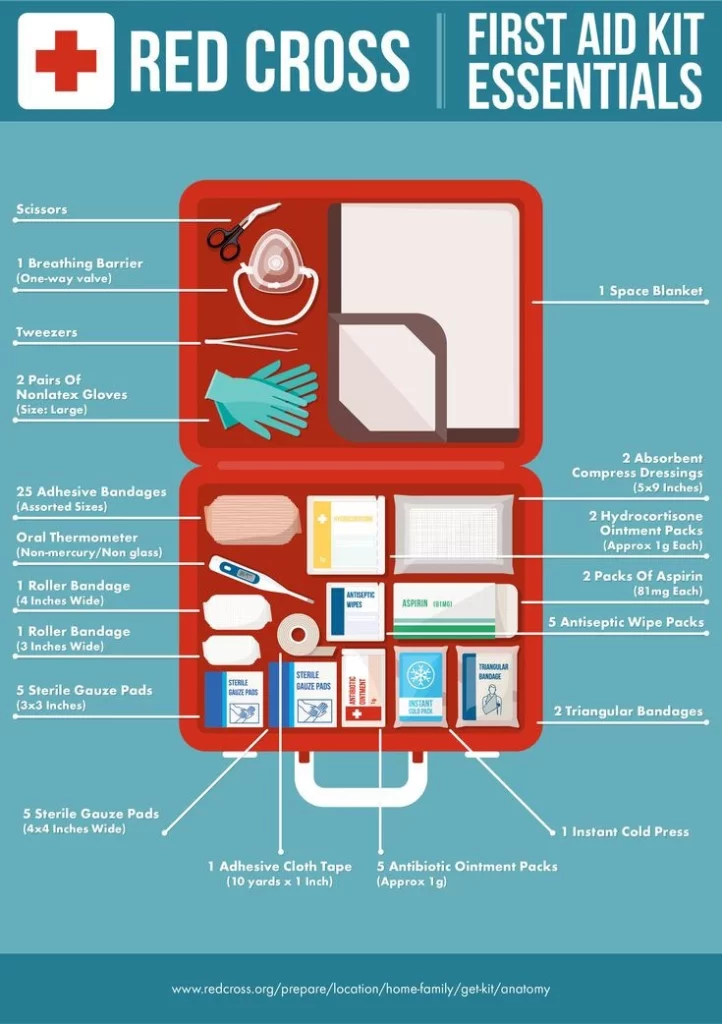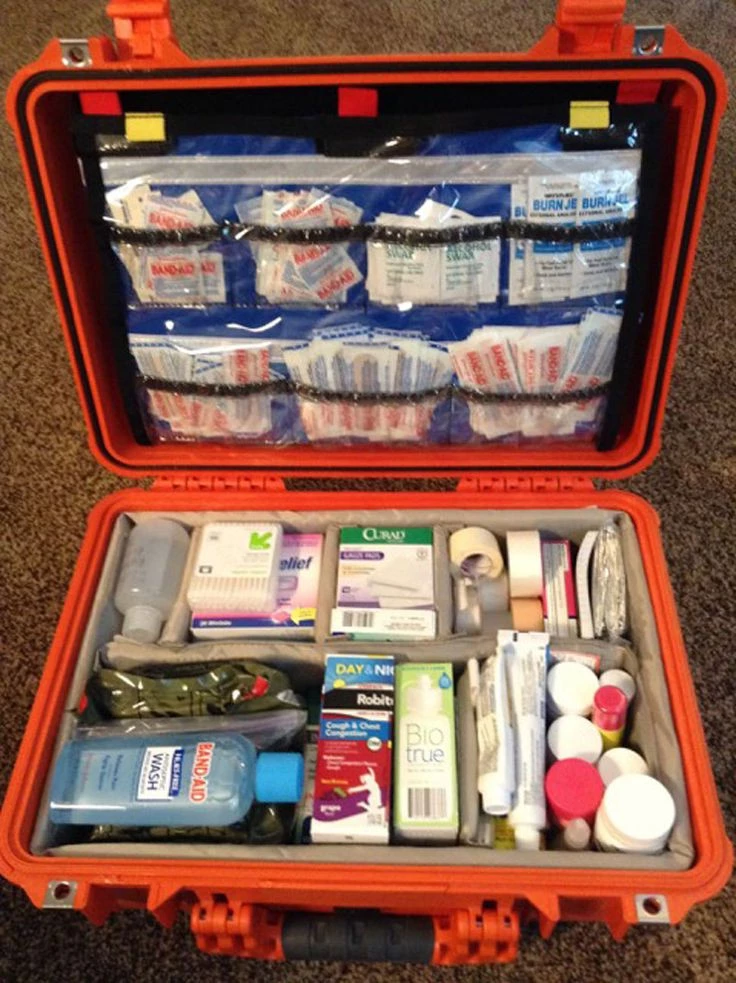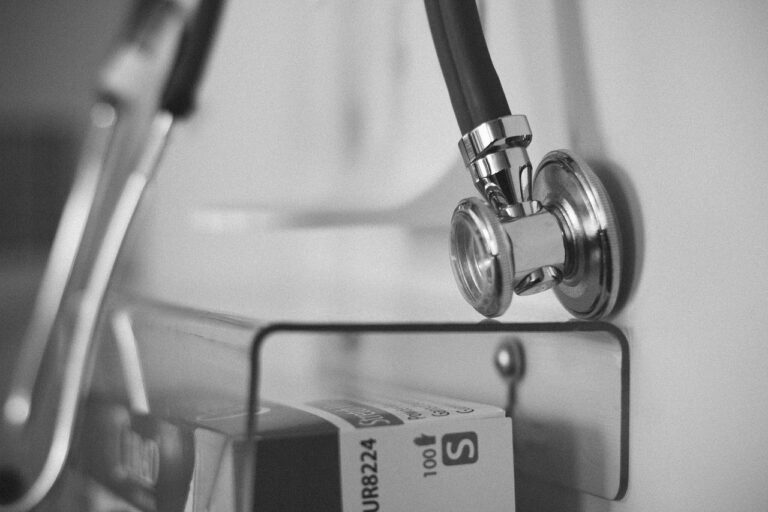First Aid: Definition, Aims, and Contents of First Aid Box
First aid just as the name suggests, is the first treatment given to an injured person or a victim of an accident or emergency to eliminate an adverse effect that can lead to death or to resuscitate the person before taking the person to the hospital or higher health agent for total treatment.
The first aid box which is usually with a cross (mostly red) can be traced back to the red cross society.
An individual who has received professional training and therefore also possesses both the practice as well as intellectual expertise necessary to manage incidents is the first aider.
Certain approved organizations, such as the Red Cross Society as well as the Ambulance Society, are prepared and equipped to provide first aid. In most cases, a first-aider-approved certification is issued, and when it expires, it can be renewed.
Read Also: 5 Tips for treating Conjunctivitis (Apollo) in Nigeria
First aid is something that everyone needs at every minor accident in the home, workplace, or road; while in transit and others, the first aid box should be well equipped to carry out these functions by a first aider.
In this article, you will not only find out what first aid is, and the objectives or aim of first aid but also find out the exact contents that shouldn’t miss in your first aid box; both for home and for traveling.
First Aid
First aid is the name for the type of medical care that is typically provided right away when an incident happens and right where it happened. It frequently comprises a single, brief treatment and is given without much technical assistance or special expertise.

The 5 Fundamental Aims Of First Aid
Preserve and maintain the victim’s life until medical treatment
Although the rescuer is a certified first aid person, they do not have medical expertise. They can do their best to make sure patients get basic care and can help treat minor injuries like cuts and scrapes that don’t require routine or emergency care.
However, in cases where the patient’s life is dangerous, they do not focus on care but to preserve life until the ambulance arrives.
Prevents escalation and ensures no further injury
Rescue efforts attempt to extend the time a patient has until an ambulance arrives. If the patient is bleeding heavily, the rescuer will not stitch the wound but will try to stop the bleeding until the ambulance arrives. In this way, they will prevent complications and deterioration of health.
Immediate relief of pain and prevention of the victim’s or wound’s condition from worsening
This is only done where possible and poses no risk to the patient. Some pain relievers can be dangerous if you bleed. Therefore, if you are not sure if pain medication is suitable, it is best to consult medical professionals first.
To hasten and accelerate the victim’s recovery
All actions taken by the first aider should be aimed at helping the injured or sick person to suddenly recover. Sometimes the victim’s position or adequate ventilation can speed recovery.
This involves the use of a first aid kit. It is filled with the necessary supplies for first-aiders to be able to help those in need.
To protect the unconscious
One of the most important factors in performing first aid is the protection and safety of the patient and rescuer. Furthermore, this also extends to people nearby. Protecting the unconscious may mean removing the person from a dangerous situation, such as a fire, flooded space, or busy road.
As you will understand, the timing of first aid is very important. If your first aid equipment is not fully stocked or not available at all, that is a big problem and it can affect the rescuer’s work.
First Aid Box
A first Aid Box is a box with a set of various items used to give first aid. It is impossible to predict when an accident occurs in the workplace.
However, employers have to do everything in their power to prevent accidents and ensure access to first aid for their employees and anyone who frequents their workplace. Make sure you know how to properly use all the items in your kit, especially the medicine. Train other members of your family to use this first aid box.
A first aid kit for everyday use in a car should be the same as a home first aid kit. By the way, you can keep the same kits in your boat (inside the waterproof bag), caravan, RV, motorhome, cabin, motel, and anywhere you spend time. You can purchase all the items for your first aid kit at an available pharmacy.
Ask your Pharmacist to help you choose items. Pack and use protective items such as rubber gloves to protect yourself from other people’s bodily fluids. Check kits twice a year and replace expired medications.
Find your regional poison control center’s phone number on the American Association of Poison Control Centers website and keep it in your kit.
First Aid Box Contents

Almost everyone will need to use a first aid kit at some point. Take the time to prepare your home and travel kits for the safety of your family. First aid boxes can be basic or complete.
Ready-made first aid kits are commercially available from chain stores or outdoor retailers, but you can easily make your own smart and inexpensive first aid kits. Some basics can’t be missing in a standard first aid box.
These include, but are not limited to:
- Cotton wool
- Clinical thermometer
- Two triangular bands.
- A dozen safety pins
- A card for general first aid advice
- Iodine
- Hydrogen peroxide
- 2 sterile tip eye patches
- Tweezers
- Vaseline
- Penicillin ointment
- A pair of scissors
- Renal plate
- Device BP
- Antiseptic (Dettol or savlon)
- Baking soda
- Gauze and lint
- Clips or any lining cloth
- Scissors
- Bandage (pancakes, rollers, triangles)
- Gentian violet
- A pair of pliers and a razor blade.
- A notebook and a pen for writing information about the type of accident and the treatment used.
- Plastic (surgical/waterproof) 20 separate, sterile, adhesive, and waterproof bandages of various sizes.
Basic Knowledge of Home and Travel First Aid Boxes
Your first aid box should be kept in the kitchen. This is where most family events occur. The bathroom has an excessive amount of moisture, which reduces the lifespan of things. The travel gear is for actual vacations away from home, though.
According to your event, store it in a bag, a backpack, or a dry bag. Burns, abrasions (scratches), punctures, cuts, sprains, crumbs, and muscle fatigue are just a few of the minuscule ailments which may be treated with one household 1st aid kit.
Because a medicine store might or might not be nearby, vacation first aid boxes ought to be particularly complete. In addition to personal medical supplies, the first aid kit should include supplies to treat the following conditions as well as products to help with virion respiratory infections’ typical symptoms:
Fever, coughing, stuffy nose, and sore throat The following illnesses are cuts, gastrointestinal issues, mild pain, allergies, and skin conditions.
A Home/household First Aid Box Should Include The Following Items

- Bandage
- CPR
pocket mask 3. Polysporin antibiotic cream – for simple wounds - Non-adhesive bandages ( Telfa); to cover wounds and burns
- Adhesive tape (all sizes)
- Triangle tape – such as sling, towel, tourniquet
- Tweezers – to remove debris, nibs, or ticks
- Scissors.
- Gel or cream containing aloe to soothe the burn.
- Corticosteroids; for external or topical use for rash
- Sterile gauze pad 4″ x 4″ – to cover and clean the wound, as a soft eye patch
- Bag resealable oven – as a container for contaminated objects, can become a bag of ice
- Safety pins (large and small) – to remove debris and secure triangular cuffs.
- Examination gloves – for protection against infection, also for ice packs when filled with water and frozen
- Anesthetic spray (Bactin) or lotion (Calamine, Camphor-Phenic) – for itchy rash and insect bites
- Ace Bandages 2″, 3″ & 4″ – for sprained or sprained joints, for gauze dressings, for splints
- Oral antihistamines – diphenhydramine (Benadryl causes drowsiness) or loratadine
for allergic reactions, and itchy rashes (Avoid topical antihistamine creams as they can make the rash worse in some people.)
A Travel/post-trip First Aid Box Should Contain These Essentials
- Antacids – for indigestion
- Duct tape
- Sterile gauze 4″ x 4″
- Aspirin – for pain relief in mild, heart attack
- Adhesive bandages (all sizes)
- Cough medicine
- Dental kit – for broken teeth, missing crowns, or fillings
- Examination gloves
- Anti-diarrheal medicine (eg Imodium, Pepto-Bismol)
- Antihistamine cream
- Disinfectant (liquid soap in a small bottle) – for cleaning wounds and hands
- Small flashlight
- Ibuprofen (Advil, Brustan-N is the brand name)
- Medicines insect repellent
- Knife (Swiss army mini)
- Moleskine – to apply to blisters or hot spots
- Diphenhydramine; oral antihistamine
- Corticosteroids for topical or external use (for rashes)
- Aloe vera gel or cream for burn relief
- First aid book
- Pocket mask CPR
- Safety pin (large and small)
- Scissors
- Tweezers
- Thermometer
- Sunscreen with SPF 30 or higher
- Decongestant nasal spray – for nasal congestion due to colds or allergies
- Non-stick compresses (Telfa)
- Antibiotic ointment polysporin
- Decongestants
- Medicines and personal items
- Resealable plastic bag (oven and sandwich)
- Phone card with at least 60 minutes remaining (not near expiration) plus at least 10 quarters for public phones and a list of important people to contact in an emergency.
- Cigar lighters – to disinfect tools and can catch fire in the wild (e.g. for warmth and smoke to signal a rescue)
Conclusion
First aid is the name for the type of medical care that is typically provided right away when an incident happens and right where it happened. It is used both at the home, workplace and when in transit.
Because of the inevitability of accidents, and the urgency of first aid, it is pertinent that all needed items should be carefully selected into the first aid box according to the purpose of its use.


